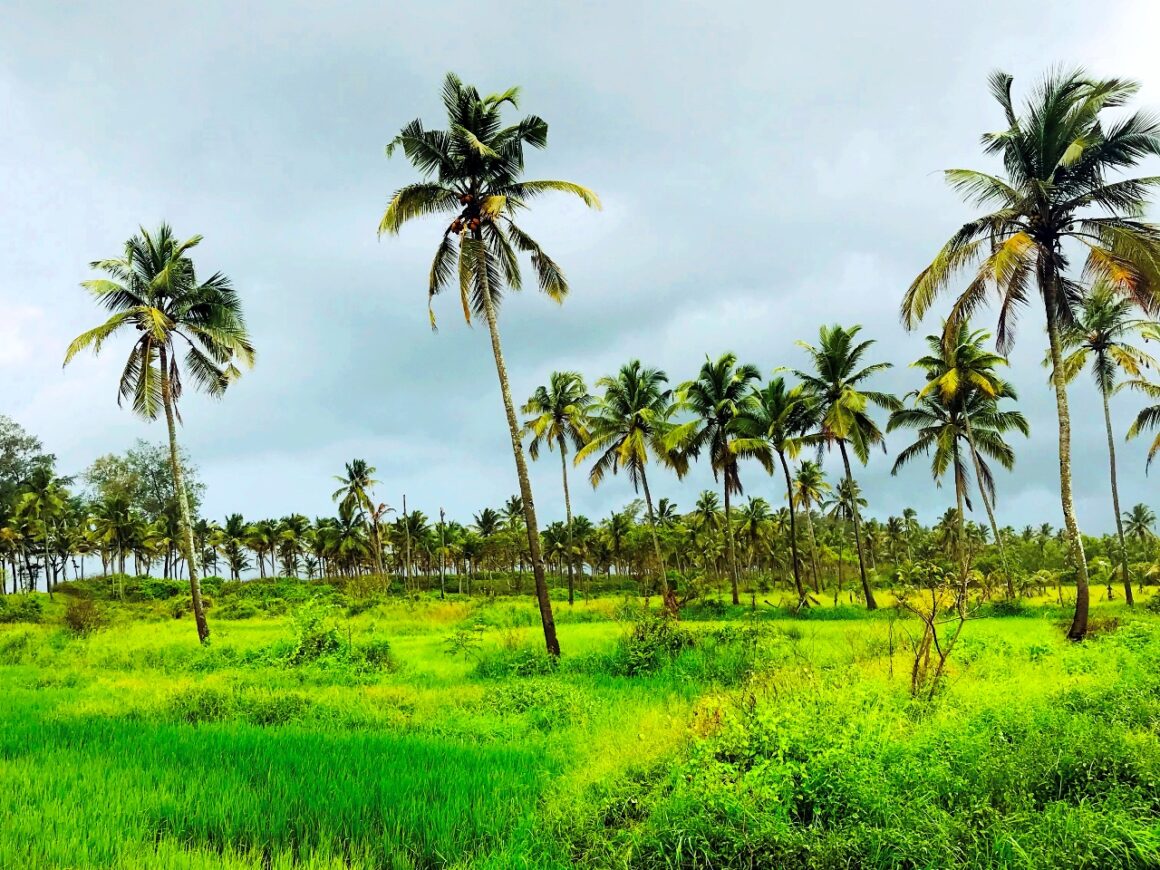Winter time in Mumbai means a lot of nice things (think green garlic, papdi, good spinach, etc.), it also means the skin and the hair start to dry out in an otherwise extremely humid city. The impending dryness necessitates a periodic ritual of my mother vigorously rubbing coconut oil into my hair, while begging it to survive the short winter of Mumbai. Last winter, as I sat there smelling all the yumminess going on in my hair, I was reminded of a similar scene from the 2007 movie Namastey London, where Katrina Kaif made faces when her proudly Punjabi family rubbed large quantities of their precious ghee into her hair. There is however one large difference between the two scenes (well, two, if you count the fact that she is Katrina Kaif and I am me) — she hated the smell of ghee and everything it represented in terms of her family’s cultural identity, while I love absolutely everything about coconut and all its products.
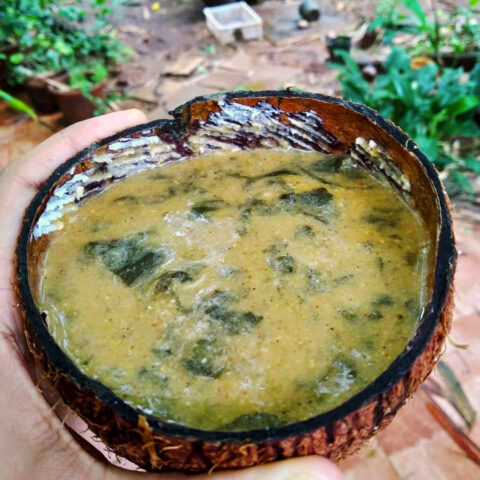
Within India, when conversation about identity comes up, I always say that I most strongly identify with being Mangalorean/South Indian. A huge part of that for me is my family’s and my love for coconuts, shared by many others in Karnataka and Kerala. As is important with every love affair — one must periodically reflect on the reason for the love, and renew and rekindle the romance. So today, with the smell of coconut oil igniting these thoughts, I began exploring why I love all things coconut — from the coconut-flavoured tiger biscuits, to coconut flesh, milk, oil and ice cream.
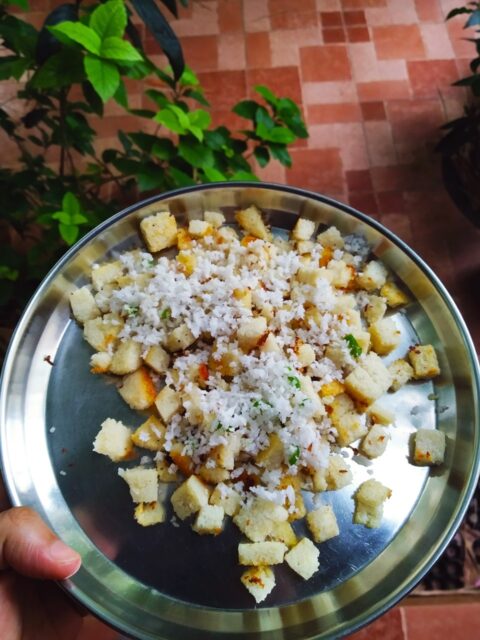
As this grown up, trying-to-be-vegan version of myself, I am quite proud of the role that coconut plays in every dish and in an increasingly vegan world — of adding creaminess. In a region that has traditionally not been exposed to paneer and cream, coconut has been the great saviour. My earliest memories of gluttony involve going to my mother every single time she would grate a coconut (i.e. at least once a day) and asking for some pieces as a snack. So what are the many different ways that we use this wonder food? (I specifically stay away from the much-used terminology “superfood”).
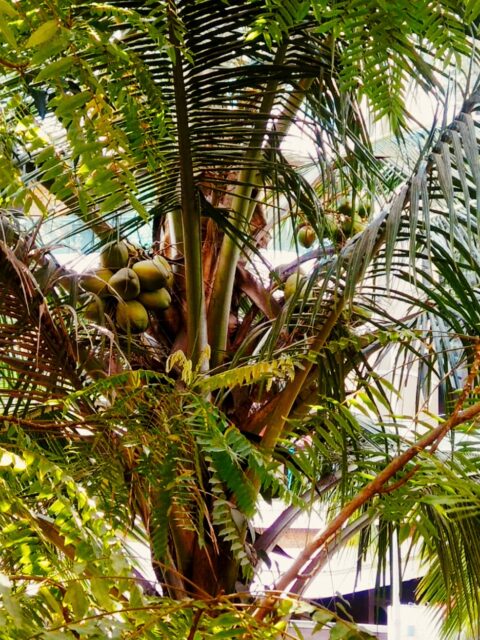
This is a coconut tree in our garden — a common sight in many plantations of Karnataka and Kerala. The green, fully-grown coconuts are called tender coconuts, and every coastal town in South Asia and South-East Asia will offer tender coconuts to enjoy their cooling, refreshing and electrolyte-filled water, and the naturally sweet and creamy flesh. Every vendor will ask you — malai wala ya paani wala (at least in the Hindi-speaking Mumbai), which means whether you want a predominantly flesh-filled coconut or a predominantly water-filled one. How they figure out the difference is beyond me, invisible to a coco-novice. They will then proceed to cut open the coconut as easily as you and I would cut through butter with a hot knife, and give you the coconut to enjoy. After you finish the water, the coconut flesh can then be enjoyed as is, or with some jaggery sprinkled on the top, as seen in the picture below. Our beloved, Mumbai-based ice cream shops Gokul and Naturals have elevated this simple dessert to a sublime one with their tender coconut ice cream.
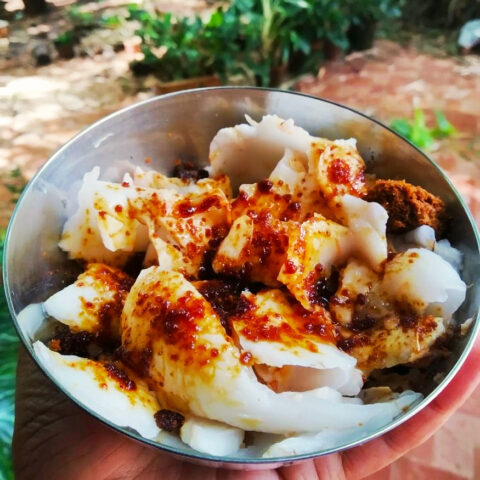
Once the coconut matures (becomes brown in colour), it could be plucked off by the expert climbers, or you can wait for it to fall down from the tree on its own. Plantation owners typically use a device and human labour to cut it open in bulk to reveal the part that we use very regularly in our cooking.
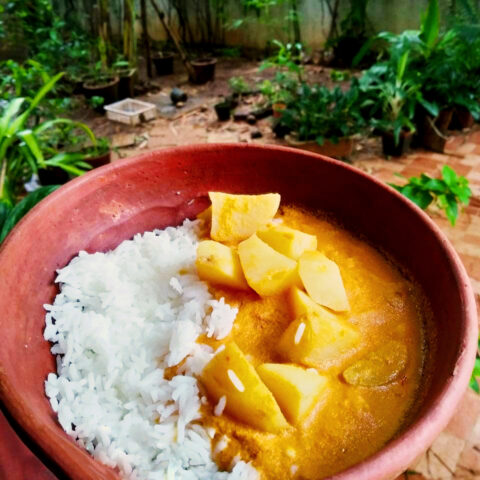
While these coconuts are available at your corner store in Mumbai, my mother always makes it a point to only buy them from our closest Mangalore store — much fleshier, says she. She grates the quantity that she needs using the coconut grater every day, and makes it a point not to store too much, lest it loses its freshness.
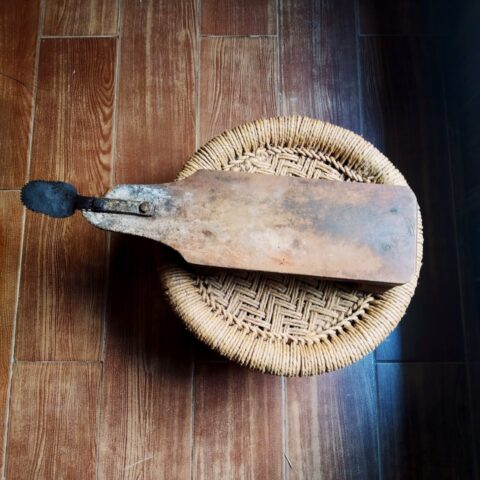
The grated coconut then makes up the base for a variety of Mangalorean gravy dishes, ground up along with different types of fresh and dried spices. We also top off dry vegetable dishes with freshly grated coconut, because one can never really have too much coconut in life eh.
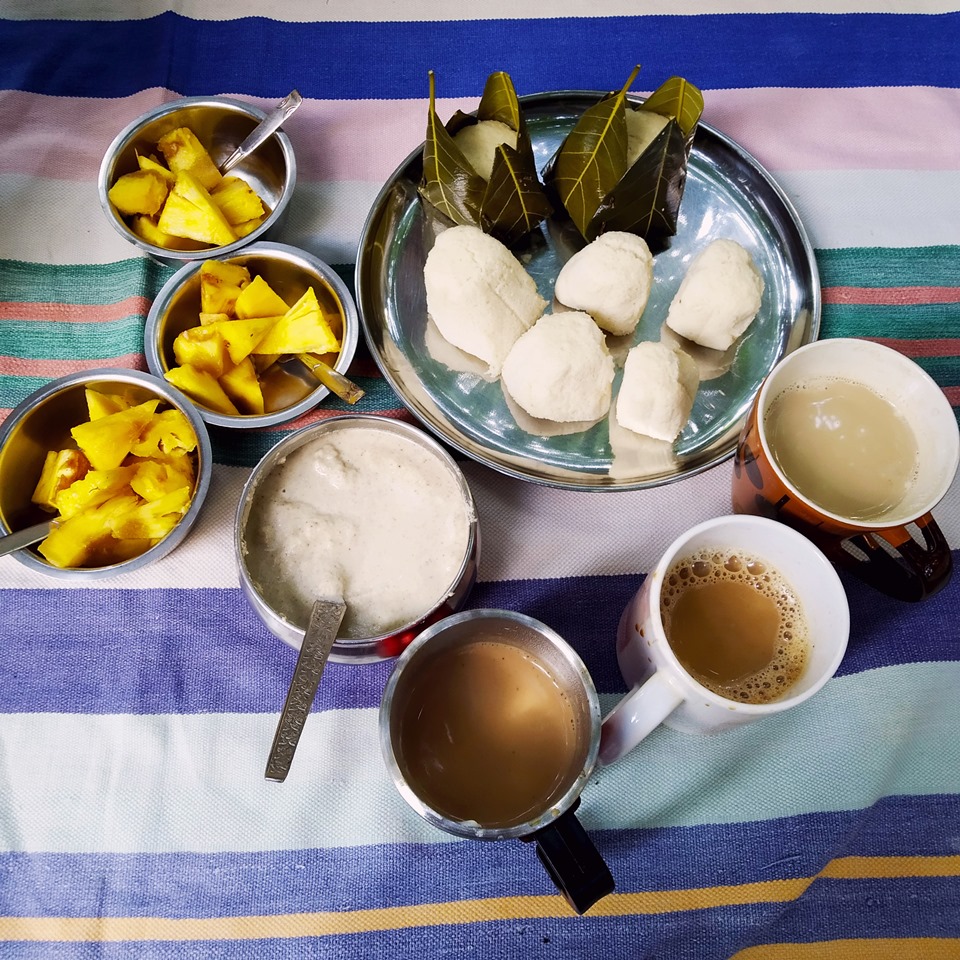
Some Mangalorean desserts such as Harshale and Madgane, the Maharashtrian Sol Kadi, and the Thai green and red curries require the use of coconut milk instead of ground up coconut. To obtain that, one grates and grinds up the coconut flesh and then puts it through a three-time crushing and sieving process to extract all the milk. The leftover coconut can then be added to other dishes where you are using ground up coconut.
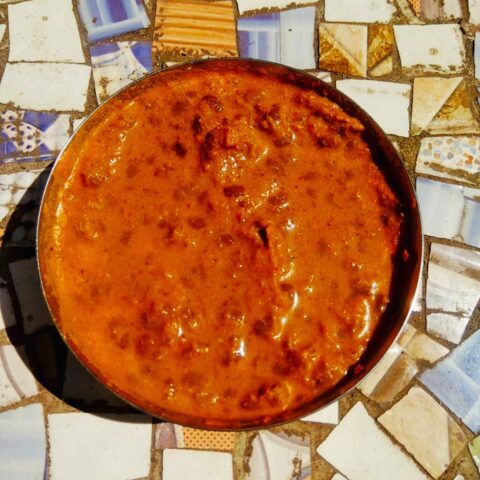
Last, but not the least, let’s talk about my favourite coconut derivative — coconut oil. Made by pressing fresh or sun-dried coconut, this miracle cooking medium and flavour-giver is what makes my food each day. Banana chips are not banana chips until they have been fried in coconut oil. A spicy, steamed, idli-like meal accompaniment called Sanna Khotto is not Sanna Khotto until it is topped with a spoon of coconut oil just before consumption. And so on. If you are not used to coconut oil, it can definitely be a strong and unpleasant taste for you. I have ghee-loving friends who refuse to eat my traditional food because the coconut oil makes it almost inedible for them. India has so many identities within one — from ghee loving and coconut oil hating, to coconut oil loving and ghee indifference.
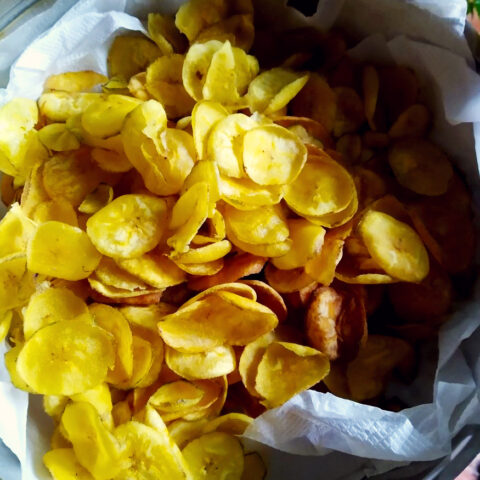
I can go on and on about the delicious flavours that this oil adds to my life, but apparently doctors have even started prescribing a teaspoon of coconut oil a day to non-believers! I cannot wait for the day that restaurants serve a bowl of coconut oil on the table to eat with bread, rice, noodles, whatever, just as they do with extra virgin olive oil.
So is it just about the tender flesh, water, matured flesh for curries, milk and oil? Wait wait, there’s more! Once in a while, if you’ve been a very good person, you might chance upon a coconut sprout. If you thought the coconut flesh was yummy, wait till you have tasted this one. Very sweet, uniquely crunchy, another favourite since childhood!
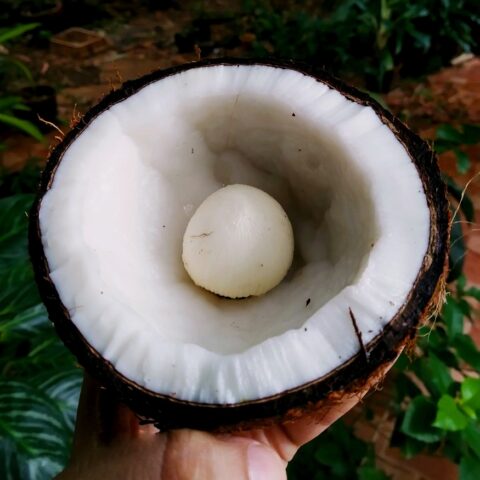
In addition to all things edible, you can also use the dried coconut leaves to make a broom. All you need to do is tear up the dried leaves to reveal a strong yet flexible stick. Tie these together to make a sustainable, eco-friendly broom that you can use to clean out our house, and to clean out your mind as you channel your frustrations into tearing up the coconut leaves. Also, the coconut leaves can be weaved together to create a hand-made gazebo that gives shade during hot summers.
Overall, this one tree can help you sustain your body and soul. There are many other such miracle foods in India, and I will probably make this into a series of stories. I’m going bananas over the next one in the series!
Aparna runs The Traveling Thali, which aims to foster a connection with different cultures through their food. She organizes culture and food workshops about Latin America, Turkey, Georgia, Uzbekistan, and Spain – all cultures she has fallen in love with from her travels and experience living there. At the heart of all of this is her identity as a Mangalorean living in Mumbai, with access to amazing local ingredients that lend themselves well to global cuisines.
Translations and detailed descriptions are provided to give a better understanding of the story to people from different cultural backgrounds across the globe.

